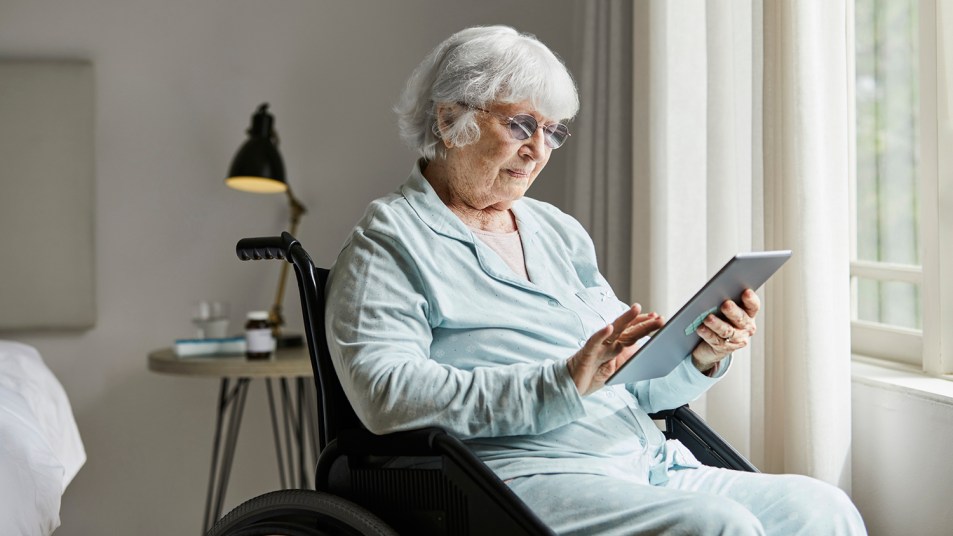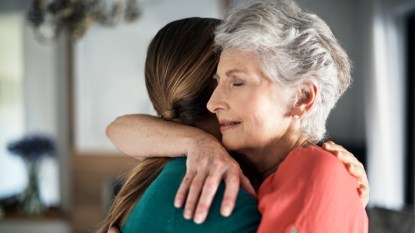6 Ways to Connect With Older Loved Ones You Can’t See During the Pandemic

Many of us us have been unable to see family for months because of COVID-19 concerns. If you have older loved ones in a long-term care facility or nursing home, you may be struggling with feelings of guilt and wondering how you can help them feel less alone while keeping your bonds strong. Our experts share heartfelt ways to connect during these difficult days.
Let go of guilt.
Though so much remains out of our control, we still feel guilty over not being able to visit older loved ones. “But guilt is like quicksand,” says Amy Goyer, AARP columnist and author of Juggling Life, Work, and Caregiving. (Buy on Amazon, $14.60) “Reframe it as concern — this lifts you up to a place of action,” she says, recalling a woman who used to visit her husband in an assisted living facility every day until COVID-19. “She felt grief over not being able to see him, so she worked with the facility to set up mocktail dates by the window. With a little creativity, you can still do a lot.”
Let yourself exhale.
“So many of us feel bad that we get to live our lives while our loved one is cooped up,” says Goyer. “A lot of folks who would visit every day feel guilty over getting a break, but you can’t beat yourself up. Your body doesn’t know why it can rest, just that it can, so allow yourself that.”
Discover allies.
Opening up the lines of communication with your loved one’s caretakers can dramatically relieve your stress. “Just asking when there’s a shift change can be so helpful,” says nursing professor Tracie Harrison, Ph.D. “You may learn it’s a bad time to talk to a nurse, for example, but a great time to talk to your loved one.” You can ask to be put in touch with a point person who’ll update you about your relative. Simply asking a few questions will give you greater peace of mind.
Share twice the support.
There are two kinds of emotional support: received and perceived, reveals psychologist Lisa Brown, Ph.D. The former is tangible, such as a care package, while the latter is social connection, like texts and phone calls. Sharing both with her 97-year-old father in a long-term care facility on the opposite coast has kept them close. “When he says he wishes he weren’t alone, I grieve for that,” she admits. “But when I send cookies and get to talk to him, that’s received and perceived support all in one, and it gives us both comfort.”
Walk down memory lane.
A powerful antidote for loneliness is savoring memories. “I sent my dad postcards I found on Amazon of scenes from around World War II he would relate to,” says Brown. (Buy on Amazon, $7.79) “He’d look at them and say things like, ‘I took your mom to that movie when we were dating.’ Nostalgia sparks gratitude. We’re physically distanced but socially connected.”
Let listening help.
Perhaps the most valuable thing we can do is simply listen, says Harrison. “My 86-year-old dad isn’t happy unless he’s outside,” she says. “Instead of letting my worries get to me and put limitations on him, I have to listen to what he needs.” Often that means reading between the lines. “They may not openly talk about it, but a lot of older adults are losing people they grew up with, which can lead to depression sometimes misdiagnosed as Alzheimer’s. Letting them share what they’re feeling makes them feel seen and helps you both connect.”
A version of this article originally appeared in our print magazine, Woman’s World.













